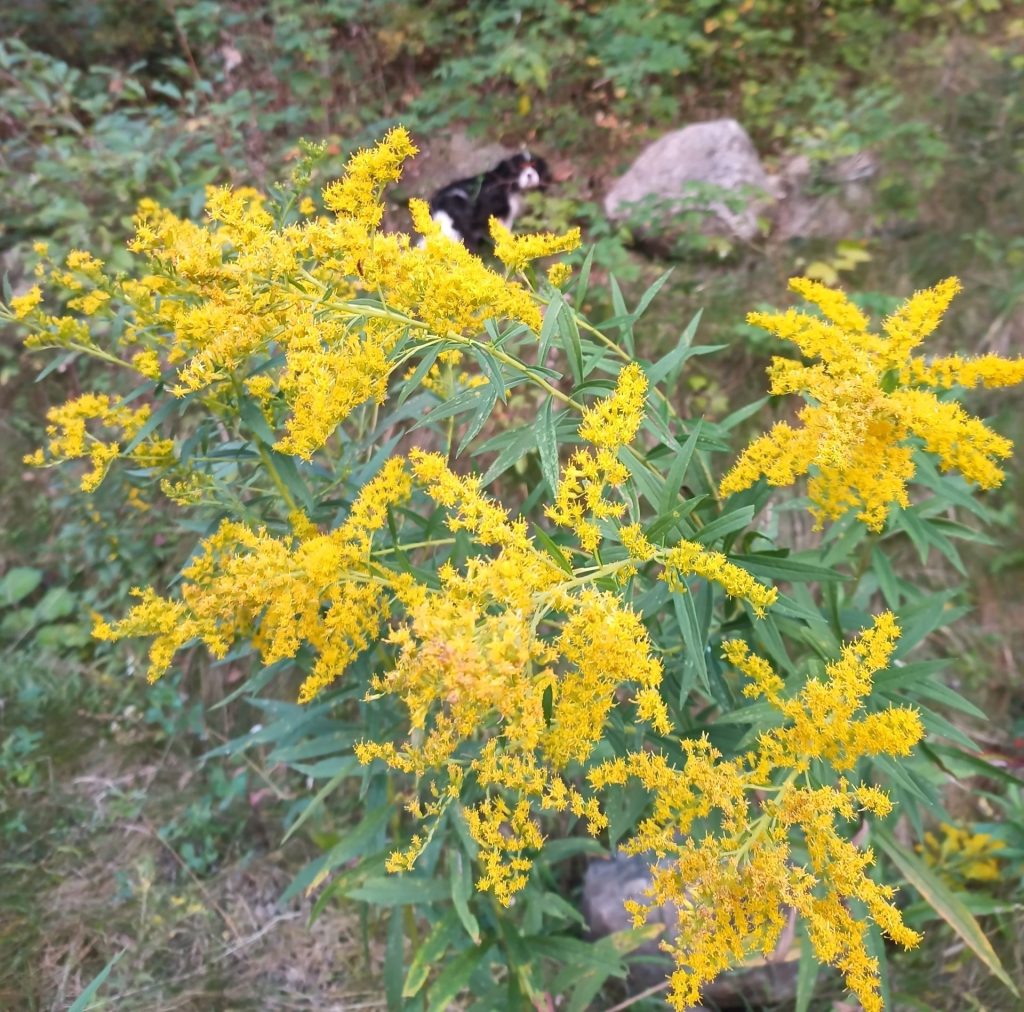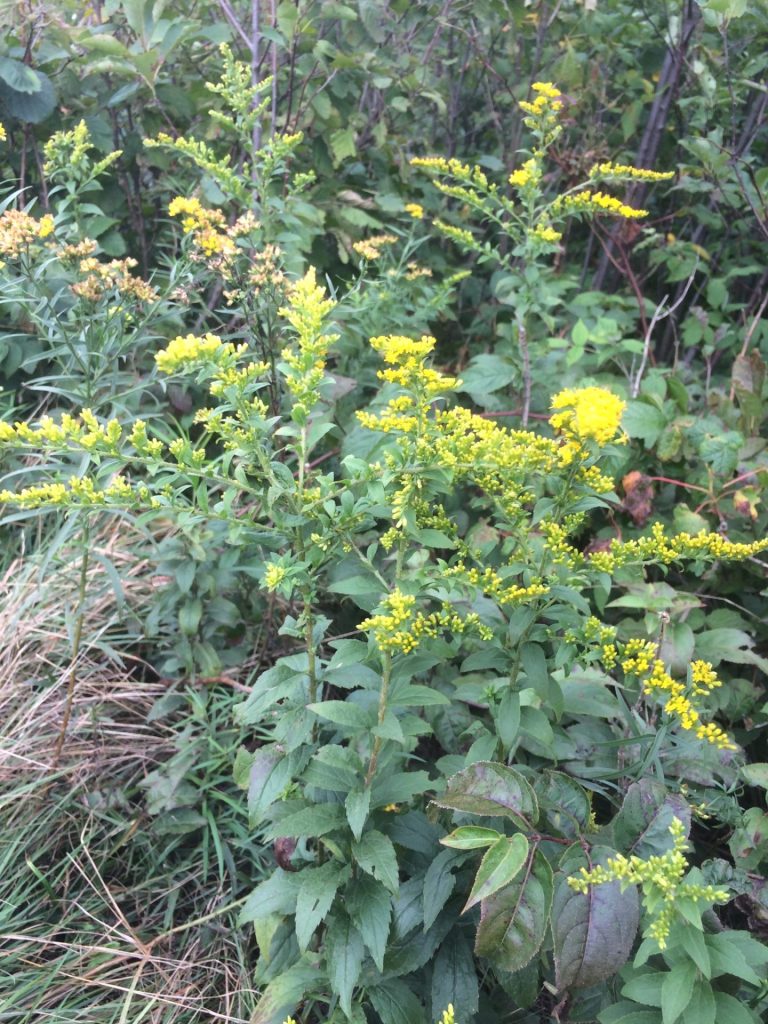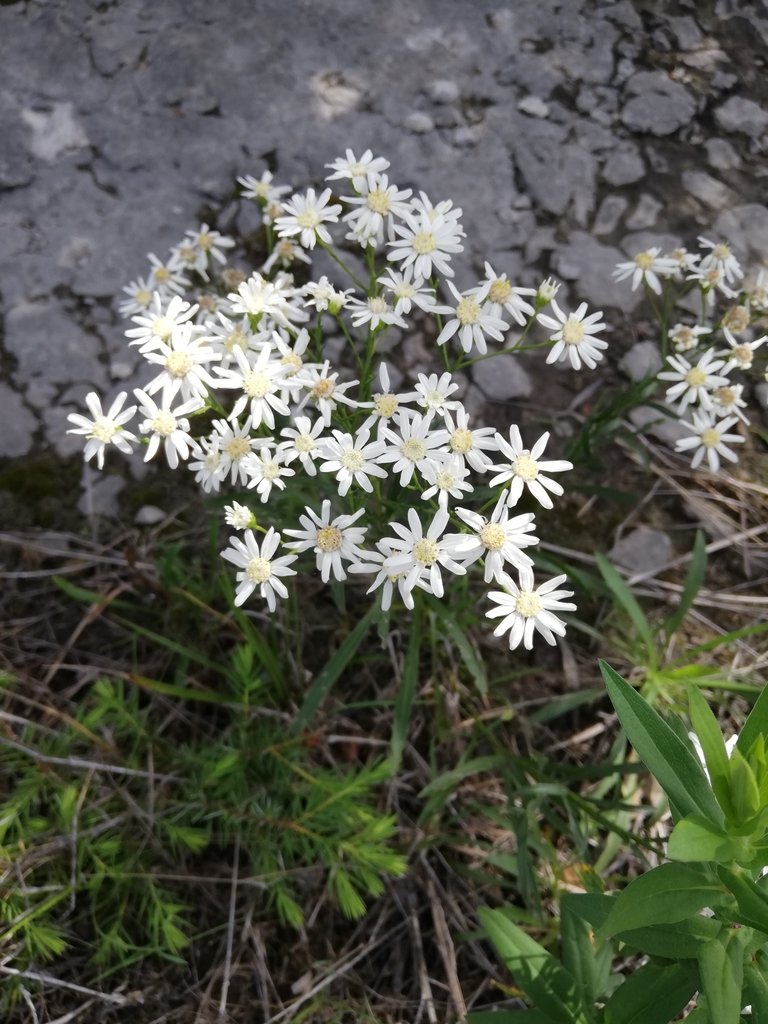
Goldenrod: The Myths and the Facts
Goldenrods face two cases of mistaken identity. Let’s clear up the mess and celebrate a valuable species.
Late summer and early fall is goldenrod season, when the landscape is splashed with bright yellow. As well as giving us some eye-candy, these plants play a vital role in our ecosystems by providing valuable late-season pollen.
But goldenrods often get a bad rap due to two cases of mistaken identity.
No, Goldenrods do not make us sneeze
Goldenrods often get confused with ragweed, whose light pollen affects those who are allergic. The two plants are – kind of – similar but really there’s no excuse to mix them up.
While ragweed is wind-pollinated, so its pollen floats through the air and up our noses, goldenrods are pollinated by insects. Their heavy pollen never floats high enough to affect us.
Here are some other differences between the two plants.
| Characteristic | Goldenrod | Ragweed |
|---|---|---|
| Flower Appearance | Bright yellow, showy flowers in dense clusters | Small, inconspicuous green flowers in spikes |
| Bloom Time | Late summer to fall (August to October) | Earlier, often July or August |
| Leaf Shape | Long, narrow, lance-shaped; smooth or slightly toothed edges | Deeply lobed, feathery; divided into many segments |
| Plant Height | Generally taller, often 3-5 feet or more | Usually shorter, 1-3 feet (giant ragweed can be taller) |
| Growth Pattern | Often in dense clusters or clumps | Individual plants, can form large patches |
| Stem Characteristics | Usually unbranched below flower cluster; often reddish or purplish | Often hairy and frequently branched |
| Habitat Preference | Meadows, prairies, woodland edges | Disturbed areas, roadsides, cultivated fields |
| Pollen Dispersal | Insect-pollinated; sticky, heavy pollen | Wind-pollinated; light, dusty pollen |
| Overall Appearance | Attractive with showy yellow flowers | Less visually striking, blends into background |
| Touch Test | Leaves feel smooth or slightly rough | Leaves often feel slightly fuzzy or hairy |
Not all goldenrods are the same
The goldenrod we’re most likely to see is Canada Goldenrod (Solidago canadensis). It’s tall and has plumes of yellow flowers that tend to arch. It spreads through rhizomes and creates large colonies.

It’s this ability to spread that makes it a problem in a garden setting. In short, it can take over. It’s why I don’t use it in the designs I create.
But, fortunately, there are lots of alternatives.
Zigzag Goldenrod (Solidago flexicaulis) is a shade-loving woodland goldenrod. It stands out with its distinctive zigzag stem, which reaches 1-3 feet tall. In late summer to fall, small clusters of bright yellow flowers appear in the leaf axils. This goldenrod thrives in partial to full shade, preferring moist, well-drained soils in deciduous or mixed forests. It spreads slowly via rhizomes.

Wrinkle-leaf Goldenrod (Solidago rugosa) typically grows 2-6 feet tall with hairy, often reddish stems. The plant’s name comes from its distinctive leaves: lance-shaped, sharply toothed, and noticeably wrinkled or rugose. These leaves are alternately arranged and decrease in size up the stem. From late summer to fall, it produces showy, pyramid-shaped clusters of small yellow flowers at the stem tips. Wrinkle-leaf goldenrod prefers moist to wet soils and can thrive in full sun to partial shade.

Upland White Goldenrod (Solidago ptarmicoides, formerly Aster ptarmicoides) is a unique member of the goldenrod family. Unlike its yellow cousins, it bears flat-topped clusters of small, white flowers from mid-summer to early fall. Growing 1-2 feet tall, it has narrow, lance-shaped leaves mostly clustered at the base, with a few smaller leaves along the stems. This drought-tolerant perennial prefers full sun and well-drained, even rocky soils. It’s found in prairies, open woods, and dry uplands.

